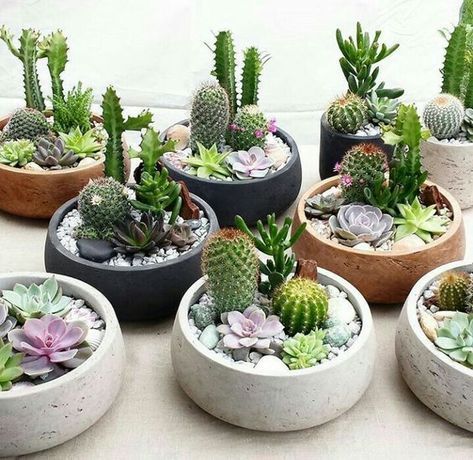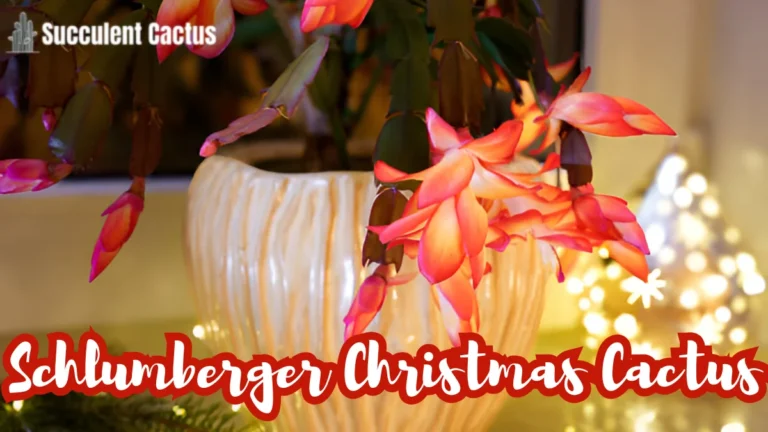Succulent Cactus Variety: A Comprehensive Guide to Different Types and Their Unique Features

Succulent Cactus Variety comes in an astonishing range of shapes, sizes, and colors. From tiny, pebble-like Lithops to towering Saguaro cacti, each species offers unique beauty and resilience. Whether you are a beginner or an experienced plant collector, understanding different Succulent Cactus Variety will help you choose the best plants for your collection.
This guide explores twelve major succulent cactus varieties, detailing their characteristics, care needs, and uses.
Understanding Succulents and Cacti: What’s the Difference?
Many people mistake cacti for succulents, assuming they are the same. While all cacti belong to the succulent family, not all succulents are cacti. The primary difference lies in their physical features, especially their ability to store water and survive in arid conditions.
Key Characteristics of Succulents
Succulents are a broad category of plants that have adapted to retain water in their leaves, stems, or roots. They come in various shapes, colors, and textures, making them popular for decorative and landscaping purposes. Some key features include:
- Water Storage: Succulents store moisture in their fleshy parts, allowing them to survive in dry environments.
- Leaf Structure: Unlike cacti, succulents often have thick, waxy leaves that minimize water loss.
- Variety of Shapes: They can be rosette-shaped (Echeveria), trailing (String of Pearls), or spiky (Aloe Vera).
- Photosynthesis Adaptation: Many succulents use Crassulacean Acid Metabolism (CAM) photosynthesis, where they absorb CO₂ at night to minimize moisture loss.
Popular succulent varieties include:
| Succulent Type | Notable Feature | Light Requirement | Watering Frequency |
| Echeveria | Rosette-shaped, colorful leaves | Bright, indirect light | Every 2-3 weeks |
| Aloe Vera | Medicinal properties | Bright sunlight | Once every 3 weeks |
| Jade Plant | Long-living, tree-like | Moderate to bright light | Once a month |
| Haworthia | Small, compact, low-maintenance | Indirect light | Every 2-3 weeks |
Defining Features of Cacti
Cacti belong to the Cactaceae family, a specialized group of succulents. They are well known for their spines instead of leaves, which reduce evaporation and protect against predators. Unlike regular succulents, cacti have areoles—small, cushion-like structures that grow spines, flowers, or new branches.
Common Features of Cacti:
- No Leaves: Cacti store water in their thick stems instead of leaves.
- Areoles: This is the defining feature of all cacti. If a succulent lacks areoles, it’s not a true cactus.
- Drought Resistance: Some cacti can survive years without water by storing moisture in their ribbed, pleated stems.
- Spines Instead of Leaves: These reduce water loss and provide shade.
Here’s how cacti compare to regular succulents:
| Feature | Succulents | Cacti |
| Leaves | Present, thick and fleshy | Absent (spines instead) |
| Water Storage | Leaves, stems, or roots | Stems only |
| Areoles | Absent | Present |
| Spines | Not always present | Always present |
| Flowers | Seasonal, varied | Often large and showy |
Succulents vs. Cacti: The Key Differences
Succulents and cacti may share some characteristics, but the presence of areoles is the biggest distinguishing factor. If a plant has areoles, it’s a cactus. If not, it’s simply a succulent. Additionally, succulents often have wider variety in leaf shapes and sizes, while cacti typically have spiky, columnar, or barrel-shaped bodies.
Popular Succulent Cactus Variety Around the World
Cacti come in various shapes, sizes, and colors, each with unique adaptations to thrive in harsh environments. Some are tiny and perfect for indoor decor, while others grow into massive tree-like structures.
Small and Decorative Cactus Varieties
If you love compact, low-maintenance plants, these small cactus varieties are perfect for homes and offices.
1. Moon Cactus (Gymnocalycium mihanovichii)
Moon cacti are famous for their brightly colored tops, usually in shades of red, yellow, orange, or pink. These are grafted cacti, meaning they require a host cactus (such as Hylocereus) to survive.
Care Tips:
- Needs bright but indirect sunlight
- Water once every two weeks
- Requires well-draining soil to prevent root rot
2. Bishop’s Cap (Astrophytum myriostigma)
This star-shaped cactus has a smooth, ribbed body that gives it a distinct look. It is thornless, making it a favorite among beginner gardeners.
Key Features:
- Slow-growing but can reach up to 3 feet in height
- Produces yellow flowers in summer
- Prefers minimal watering (every 3-4 weeks)
3. Mammillaria (Mammillaria spp.)
Mammillaria is one of the largest cactus genera, with over 200 species. They often form clusters of small, round cacti covered in white spines.
Growing Tips:
- Thrives in full sun to partial shade
- Requires well-drained, sandy soil
- Can survive drought conditions for weeks
| Small Cactus Variety | Size | Flower Color | Special Features |
| Moon Cactus | 1-4 inches | Red, pink, yellow | Grafted, colorful top |
| Bishop’s Cap | Up to 3 feet | Yellow | Thornless, star-shaped |
| Mammillaria | 4-12 inches | White, pink, red | Forms clusters, highly resilient |
Medium-Sized Cactus Varieties
Medium-sized cacti make great indoor or outdoor plants, growing 1 to 6 feet tall.
1. Golden Barrel Cactus (Echinocactus grusonii)
This round, spiny cactus is called the Golden Barrel because of its bright yellow spines. It can live for up to 100 years!
Key Facts:
- Grows slowly but can reach 3 feet in diameter
- Thrives in full sunlight
- Water once a month in winter, once every 2 weeks in summer
2. Old Man Cactus (Cephalocereus senilis)
Recognized by its long, white, hair-like spines, the Old Man Cactus adds aesthetic appeal to any garden.
Care Guide:
- Needs full sun exposure
- Water every 2-3 weeks
- Protect from excessive humidity
| Medium Cactus Variety | Height | Watering Needs | Lifespan |
| Golden Barrel | 2-3 feet | Low | 100 years |
| Old Man Cactus | 5-6 feet | Moderate | 50+ years |
Large and Columnar Cactus Varieties
Some cacti grow into towering giants, making them perfect for outdoor landscapes.
1. Saguaro Cactus (Carnegiea gigantea)
The tallest cactus species, saguaros can grow up to 40 feet and live for over 150 years!
Key Characteristics:
- Develop arms after 50-75 years
- Produces white flowers that bloom at night
- Thrives in hot, arid environments
2. Peruvian Apple Cactus (Cereus peruvianus)
This fast-growing columnar cactus is unique because it produces edible fruit known as “Peruvian apples.”
| Large Cactus Variety | Height | Edible Fruit? |
| Saguaro | Up to 40 feet | No |
| Peruvian Apple | 10-30 feet | Yes |
How to Identify Different Succulent Cactus Varieties
Identifying succulent cactus variety can be tricky, especially since many share similar features. However, understanding their shapes, spine patterns, flowers, and growth habits makes it easier.
Identifying by Shape and Structure
Cactus varieties come in various shapes and growth forms, including:
- Columnar Cacti – Tall, pillar-like structures (e.g., Saguaro, Organ Pipe Cactus)
- Round or Barrel Cacti – Short, globe-shaped (e.g., Golden Barrel Cactus)
- Clustering Cacti – Forming groups or pads (e.g., Prickly Pear)
- Leafy Succulent Cacti – Have leaves instead of spines (e.g., Pereskia)
Example Table: Cactus Identification by Shape
| Cactus Shape | Example | Growth Habit | Size Range |
| Columnar | Saguaro | Upright, single trunk | 10-40 feet |
| Barrel | Golden Barrel | Round, slow-growing | 1-3 feet |
| Clustering | Mammillaria | Compact, forms clusters | 4-12 inches |
| Leafy | Pereskia | Bush-like, has leaves | 3-6 feet |
Identifying by Spine Patterns
Cactus spines serve as a defense mechanism and help reduce water loss. Some varieties have long, sharp spines, while others have hair-like bristles or woolly coverings.
- Long, sharp spines – Found in Ferocactus, Echinocactus
- Short, dense spines – Seen in Gymnocalycium, Mammillaria
- Hairy or woolly spines – Common in Old Man Cactus (Cephalocereus senilis)
- No spines – Some cacti, like Lophophora williamsii (Peyote), lack spines altogether
Identifying by Flowering Patterns
Cactus flowers come in various colors, sizes, and blooming times. Some only bloom at night, while others open in full sunlight.
- Night-blooming – Dragon Fruit Cactus, Cereus, Epiphyllum
- Day-blooming – Prickly Pear, Echinopsis, Rebutia
- Seasonal bloomers – Some cacti only bloom in spring or summer
Best Growing Conditions for Succulent Cactus Varieties
Cacti thrive in specific conditions, depending on their native habitat. Understanding their light, soil, and watering needs ensures healthy growth.
Ideal Sunlight and Temperature Requirements
Most succulent cacti prefer full sunlight, but some require partial shade.
| Cactus Type | Sunlight Requirement | Temperature Range |
| Desert Cactus | Full sun (6+ hours) | 50°F – 100°F |
| Tropical Cactus | Partial shade | 60°F – 90°F |
Desert Cactus (Full Sun Lovers)
- Examples: Saguaro, Golden Barrel, Opuntia
- Thrive in direct sunlight for at least 6 hours daily
- Can withstand high heat and minimal water
Tropical Cactus (Partial Shade Lovers)
- Examples: Christmas Cactus, Orchid Cactus
- Grow best in indirect light or dappled sun
- Prefer higher humidity and consistent moisture
Soil and Drainage Needs
Succulent cacti need fast-draining soil to prevent root rot.
- Best soil mix:
- 60% coarse sand or perlite
- 30% potting soil
- 10% pumice or gravel
| Soil Type | Best For | Drainage Level |
| Sandy soil | Most desert cacti | Excellent |
| Peat-based | Epiphytic cacti | Moderate |
Watering Schedule for Healthy Growth
Overwatering is a common mistake when caring for cacti.
- Desert Cacti → Water every 2-3 weeks in summer, once a month in winter
- Tropical Cacti → Water once a week, more often in dry conditions
Propagating Succulent Cactus Varieties
Propagation allows you to grow new plants from cuttings, seeds, or offsets.
Growing from Cuttings
Many cacti can be propagated by cutting a healthy stem or pad and letting it dry before planting.
- Best for: Prickly Pear, Cholla, San Pedro Cactus
- Steps:
- Cut a 4-6 inch segment
- Let it dry for 3-5 days to form a callus
- Plant in well-draining soil
- Water lightly until roots develop
Growing from Seeds
Cactus seeds take weeks to months to germinate, requiring patience.
| Propagation Method | Time to Grow | Success Rate |
| Cuttings | 2-3 weeks | High |
| Seeds | 3-6 months | Moderate |
Using Offsets for Propagation
Many cacti produce offsets or “pups” that can be separated and replanted.
- Best for: Mammillaria, Echinopsis, Aloe Vera
- Steps:
- Gently remove offsets
- Allow to dry for 2-3 days
- Plant in dry soil and water after a week
Benefits of Growing Succulent Cactus Varieties
Cacti are more than just decorative plants—they offer health, environmental, and economic benefits.
Air Purification
Cacti remove toxins and pollutants from the air, improving indoor air quality.
- Absorb carbon dioxide
- Reduce volatile organic compounds (VOCs)
- Increase oxygen levels indoors
| Benefit | How it Helps |
| Air Purification | Removes toxins from the air |
| Low Maintenance | Requires little water |
Medicinal and Nutritional Uses
Many cacti, like Prickly Pear and Aloe Vera, have healing properties.
- Prickly Pear – Lowers blood sugar and reduces inflammation
- Aloe Vera – Treats burns, wounds, and skin conditions
Psychological and Aesthetic Benefits
Studies show that keeping plants indoors can reduce stress and anxiety.
- Boosts mood and productivity
- Enhances home decor with minimal maintenance
Common Problems and Solutions for Succulent Cactus Varieties
Growing cacti can sometimes come with challenges, including pest infestations, diseases, and growth issues. Understanding these problems and their solutions helps ensure healthy plant growth.
Pests That Affect Succulent Cactus Varieties
Even though cacti are hardy, they can still suffer from pest infestations. Some common pests include:
| Pest | Signs of Infestation | Treatment |
| Mealybugs | White, cotton-like substance on the plant | Use alcohol on a cotton swab to remove pests |
| Spider Mites | Tiny red or brown dots, webbing on cactus | Spray with insecticidal soap |
| Scale Insects | Hard, shell-like bumps on the surface | Scrape off and apply neem oil |
How to Prevent Pests
- Keep plants well-ventilated
- Avoid overwatering, which attracts pests
- Inspect new plants before adding them to your collection
Diseases That Affect Succulent Cactus Varieties
Cactus diseases are often caused by fungus or bacterial infections due to overwatering and poor drainage.
| Disease | Symptoms | Solution |
| Root Rot | Black, mushy roots, wilting | Remove affected roots, repot in dry soil |
| Fungal Spots | Brown or black patches on the skin | Apply fungicide, reduce humidity |
| Corking | Woody, brown patches on the stem | Natural aging process—no treatment needed |
Preventing Cactus Diseases
- Use well-draining soil
- Water sparingly to avoid root rot
- Avoid crowding plants, which can increase humidity
Growth Issues and How to Fix Them
Cacti can experience growth problems, such as leggy stems, discoloration, or lack of flowers.
| Problem | Cause | Solution |
| Etiolation (stretching) | Lack of sunlight | Move to a sunnier spot |
| Yellowing | Overwatering or poor drainage | Let the soil dry out before watering |
| No flowering | Lack of nutrients or incorrect light | Use a balanced cactus fertilizer |
How to Decorate Your Home with Succulent Cactus Varieties
Cacti make stunning decor pieces due to their unique shapes, colors, and textures.
Using Succulent Cacti in Indoor Spaces
Cacti are perfect for indoor decorations, as they require minimal care. Some placement ideas include:
- On windowsills – Best for sun-loving cacti
- Terrariums – Great for mini cactus varieties
- Hanging planters – Ideal for trailing cacti like Rhipsalis
- Bookshelves and desks – Adds aesthetic appeal to workspaces
Best Indoor Cacti for Decor
| Cactus Type | Ideal Placement |
| Christmas Cactus | Hanging baskets |
| Moon Cactus | Office desks |
| Zebra Cactus | Small pots on shelves |
Outdoor Landscaping with Succulent Cactus Varieties
Cacti are drought-tolerant, making them ideal for outdoor gardens.
- Rock gardens – Pair with stones and gravel
- Succulent walls – Vertical gardens with hanging cacti
- Pathway borders – Line walkways with Golden Barrel Cactus
Creative DIY Cactus Decor Ideas
- Cactus fairy gardens – Combine miniature figurines with small cacti
- Recycled pot planters – Use old mugs, jars, or tins for cactus pots
- Cactus centerpieces – Create table arrangements with multiple varieties
Rare and Exotic Succulent Cactus Variety
Some cacti are rare and highly sought after due to their unusual appearances or limited availability.
Most Unique and Uncommon Cactus Species
| Cactus Name | Why It’s Unique |
| Blue Torch Cactus | Deep blue skin, slow-growing |
| Spiral Cactus | Grows in a spiral pattern |
| Peyote | No spines, medicinal properties |
| Boobie Cactus | Odd, rounded growths resembling bubbles |
Expensive and Collector’s Cactus Variety
Some cacti are highly valued among collectors and can be very expensive.
| Cactus Name | Average Price |
| Variegated Astrophytum | $100-$500 |
| Crested Myrtillocactus | $200+ |
| Albino Gymnocalycium | $150+ |
Where to Buy Rare Cactus Varieties
- Specialty nurseries
- Online plant auctions
- Succulent and cactus expos
Caring for Succulent Cactus Variety in Different Climates
Cacti adapt to various climates, but some adjustments may be needed for extreme weather conditions.
Caring for Cacti in Hot, Dry Climates
- Provide afternoon shade for sensitive varieties
- Water deeply but infrequently
- Use mulch to reduce soil evaporation
Growing Cacti in Cold Climates
- Move potted cacti indoors during winter
- Use frost cloth to protect outdoor cacti
- Ensure pots have good drainage to avoid freezing roots
How to Care for Cacti in Humid Environments
- Use fast-draining soil to prevent rot
- Space plants far apart to reduce humidity
- Avoid misting—cacti don’t need extra moisture
How to Choose the Right Succulent Cactus for Your Space
Choosing the right cactus depends on light conditions, space, and personal preferences.
Best Cactus for Small Spaces
- Zebra Cactus – Compact, thrives indoors
- Moon Cactus – Colorful, great for desks
- Mammillaria – Small, low-maintenance
Best Cactus for Large Outdoor Gardens
- Saguaro – Grows up to 40 feet
- Golden Barrel – Stunning in rock gardens
- Opuntia – Fast-growing and hardy
Low-Maintenance Cactus for Beginners
| Cactus | Why It’s Great for Beginners |
| Golden Barrel | Needs minimal care |
| Hedgehog Cactus | Hardy, fast-growing |
| Christmas Cactus | Easy to propagate |
Fun Facts About Succulent Cactus Variety
Cacti have fascinating traits that make them unique.
Surprising Cactus Facts
- Cacti can live for over 200 years
- Some cacti store up to 200 gallons of water
- The world’s tallest cactus is over 60 feet tall
Famous Cacti Around the World
- Saguaro Cactus – Arizona, USA
- Mexican Giant Cardon – The largest cactus species
- Bishop’s Cap Cactus – Star-shaped and spineless
Why Cacti Are Loved by Collectors
- Unique shapes and colors
- Easy to propagate and care for
- Some varieties are extremely rare
FAQs About Succulent Cactus Variety
1. How do I know if my cactus is overwatered or underwatered? Overwatered cacti often have soft, mushy stems and may turn black due to rot. Underwatered cacti, on the other hand, appear wrinkled, shriveled, and dry. To prevent both issues:
- Water only when the soil is completely dry
- Use a well-draining potting mix
- Ensure the pot has drainage holes
2. Can I grow succulent cacti indoors without sunlight? Most cacti require bright, indirect light or direct sunlight. However, some varieties like the Zebra Cactus (Haworthia) and Christmas Cactus (Schlumbergera) can tolerate low light conditions. If natural sunlight is limited:
- Use grow lights to supplement light exposure
- Place cacti near bright windows
- Rotate the plant to ensure even growth
3. What is the best soil mix for succulent cacti? Cacti need fast-draining soil to prevent root rot. The ideal mix includes:
| Ingredient | Purpose |
| Potting Soil | Base material for nutrients |
| Coarse Sand | Improves drainage |
| Perlite or Pumice | Increases aeration |
4. How can I make my cactus bloom? To encourage flowering:
- Ensure the cactus gets at least 6 hours of sunlight daily
- Reduce watering in winter to trigger a bloom cycle
- Use a low-nitrogen, high-phosphorus fertilizer before flowering season
5. Why is my cactus turning yellow or brown? Cactus discoloration is usually due to:
- Overwatering (yellow, mushy base)
- Too much direct sunlight (brown, sunburned patches)
- Pest infestation (yellowing with small dots)
- Nutrient deficiency (slow yellowing)
If your cactus turns yellow or brown, check its watering schedule, sunlight exposure, and for any signs of pests.
Conclusion
Succulent Cactus Variety is among the most versatile, low-maintenance, and visually striking plant collections available. Whether you’re a beginner looking for an easy-to-care-for plant or a collector searching for rare and exotic species, cacti offer endless diversity.
Key takeaways:
- Choose the right variety based on your climate and space
- Provide well-draining soil and avoid overwatering
- Ensure proper sunlight exposure or supplement with grow lights
- Monitor for pests and diseases to maintain healthy growth
With the right care, your succulent cacti can thrive for decades, bringing beauty and uniqueness to your home or garden. Whether for aesthetic appeal, landscaping, or collecting rare varieties, these plants remain a timeless favorite among succulent enthusiasts.
Would you like any refinements or additional details? 😊






